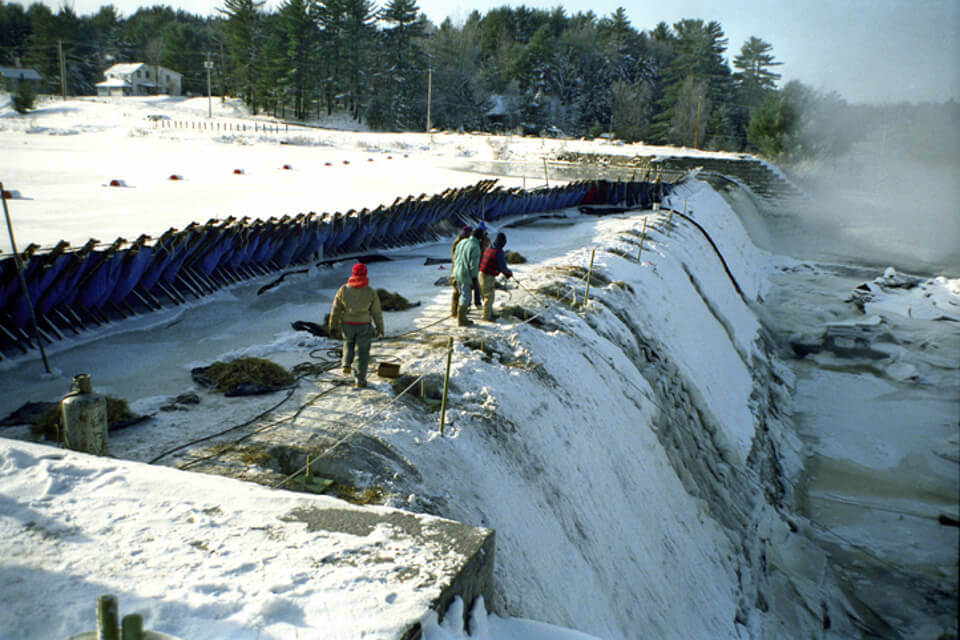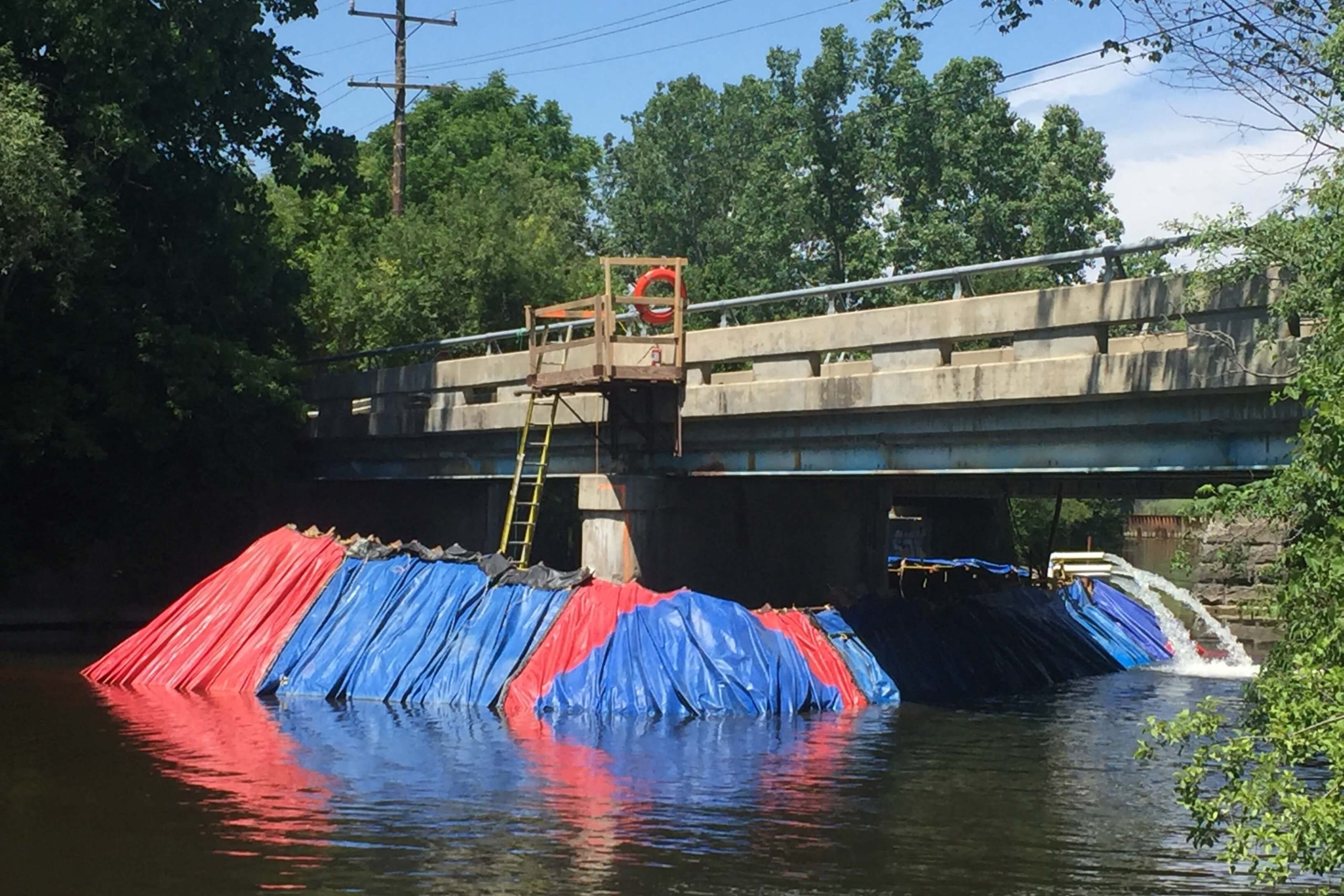| Portadam® |
|---|
| Marine Equipment Solutions |
| More information |
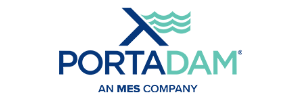 |
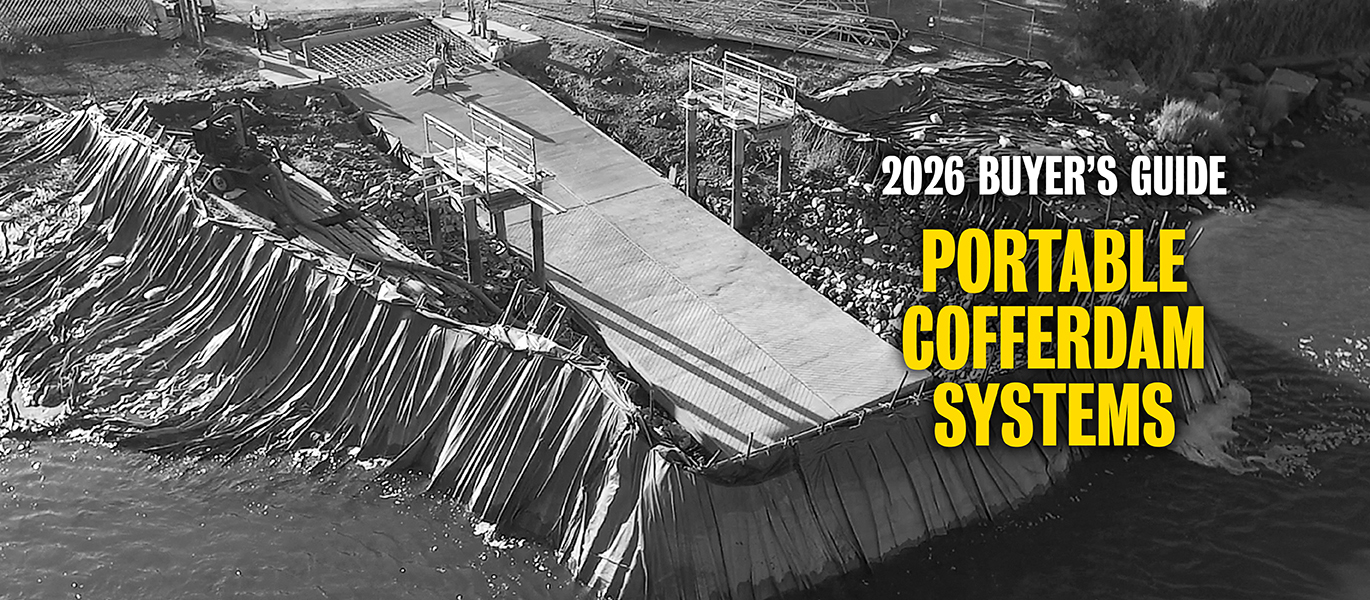
Cofferdams are essential tools for creating dry working environments in marine and underwater construction projects. These temporary enclosures allow contractors to divert water or dewater areas—making it easier to complete tasks such as bridge repairs, pipeline installation, and other marine infrastructure work. This buyer’s guide focuses on prefabricated cofferdam systems—products that are supplied and ready to deploy, offering contractors a practical alternative to building custom cofferdams on-site.
What are Cofferdam Systems?
Cofferdams are temporary structures built to control or remove water from a construction site, allowing for dry working conditions in areas that would otherwise be submerged. Traditional cofferdams are often constructed with materials like steel sheet piles driven into the ground, but the process of building these systems can be time-consuming and labor-intensive.
In contrast, prefabricated cofferdam systems are designed for quicker installation and ease of use. These systems include water-filled barriers, modular units, and portable cofferdams—which contractors can purchase or rent from suppliers. Prefabricated cofferdams are particularly useful for smaller or mid-sized projects where speed and efficiency are critical.
Types of Supplied Cofferdam Systems
The primary types of cofferdam systems include water-filled, modular, and portable.
Water-Filled Cofferdams
These systems consist of large, flexible tubes that are filled with water to create a barrier. The water-filled design provides an adaptable and lightweight solution for controlling water in both large and small-scale projects. These systems are easy to transport, install, and remove once the job is complete.
Applications: Ideal for flood control, stream diversion, pipeline installation, and maintenance work.
Modular Cofferdam Systems
Modular systems are composed of prefabricated panels or structures that are assembled on-site. These units are engineered for easy assembly and can be reused across multiple projects. They are particularly useful for projects requiring long-term dewatering or water diversion.
Applications: Bridge repairs, dam maintenance, and long-term dewatering projects.
Portable Cofferdams
Portable cofferdams are designed to be highly mobile and are often water-inflated or air-inflated. These systems provide a portable option for quick response to flood emergencies or temporary dewatering of small work areas.
Applications: Emergency flood response, small excavation sites, and quick-fix maintenance jobs.

Key Considerations When Choosing a Cofferdam System
When selecting a prefabricated cofferdam system, there are several factors to consider to ensure the system fits your project’s needs…
Project Environment
Assess the depth, size, and flow rate of the body of water where the cofferdam will be used. Water-filled cofferdams, for instance, are well-suited for shallow or moderate-depth applications—while modular systems may be necessary for deeper waters or more complex conditions.
Material and Durability
Consider the durability of the materials used in the cofferdam system. For example, water-filled systems typically use tough, UV-resistant geotextiles—while modular systems might include steel or aluminum components. The environment, such as exposure to saltwater, may also influence material choice.
Ease of Installation and Removal
One of the major advantages of prefabricated systems is their quick installation compared to traditional built-in-place cofferdams. Most water-filled systems can be installed in just a few hours, while modular systems might take a bit longer depending on the project size. However, all prefabricated systems are designed with efficiency in mind.
Environmental Impact
Many prefabricated cofferdam systems are environmentally friendly, allowing for easier restoration of the natural environment after project completion. Water-filled systems, in particular, cause minimal disturbance to the surrounding area and can be easily drained and removed once the project is done.
Cost and Reusability
Prefabricated cofferdam systems can often be rented, which can be a more cost-effective option for short-term projects. For contractors who frequently perform dewatering tasks, purchasing a reusable system may provide better long-term value.
Installation of Prefabricated Cofferdam Systems
Installation is one of the primary advantages of using prefabricated cofferdam systems, as they are typically designed for quick and efficient deployment. Here’s a breakdown of the installation process for the different types of systems…
Water-Filled Cofferdams
Preparation: The installation area is first cleared of debris and any obstructions. Depending on the water flow and depth, the cofferdam is positioned either upstream or in the work area.
Deployment: The empty water-filled tubes are laid out in the required position. Water is then pumped from the water source (or an external water supply) into the tubes. As the tubes fill with water, they create a secure barrier that diverts or controls the flow.
Stabilization: The weight of the water provides stability. In some cases, additional anchoring is required—especially in areas with high water pressure or strong currents.
Removal: After the project is complete, the water is drained from the tubes—allowing for easy removal and reuse of the system in future projects.
Modular Cofferdams
Preparation: The installation site is prepped by leveling the area where the cofferdam will be placed. This is particularly important for ensuring the modular units connect correctly and provide a watertight barrier.
Assembly: Prefabricated panels are transported to the site and assembled. Modular systems typically use a combination of interlocking panels, braces, and other components that are bolted or connected together to form a solid barrier.
Sealing: Once assembled, the cofferdam is sealed to ensure no water leaks into the work area. Additional lining or sealing materials may be applied depending on site conditions.
Removal: Disassembling modular cofferdams is relatively simple. After the water is diverted or removed—the panels are dismantled, cleaned, and transported back for reuse.
Portable Cofferdams
Preparation: Similar to water-filled cofferdams, portable units require minimal site preparation. The area is cleared of any obstacles to ensure a smooth installation.
Deployment: The cofferdam is positioned and inflated using either water or air, depending on the system. Inflation usually takes only a few hours, making portable cofferdams ideal for emergency situations.
Stabilization: The weight and structure of the inflated cofferdam provide stabilization. In some cases, additional measures—like anchoring—may be required for added security.
Removal: Once the job is done—the cofferdam is deflated, packed up, and either stored for future use or returned to the supplier if rented.
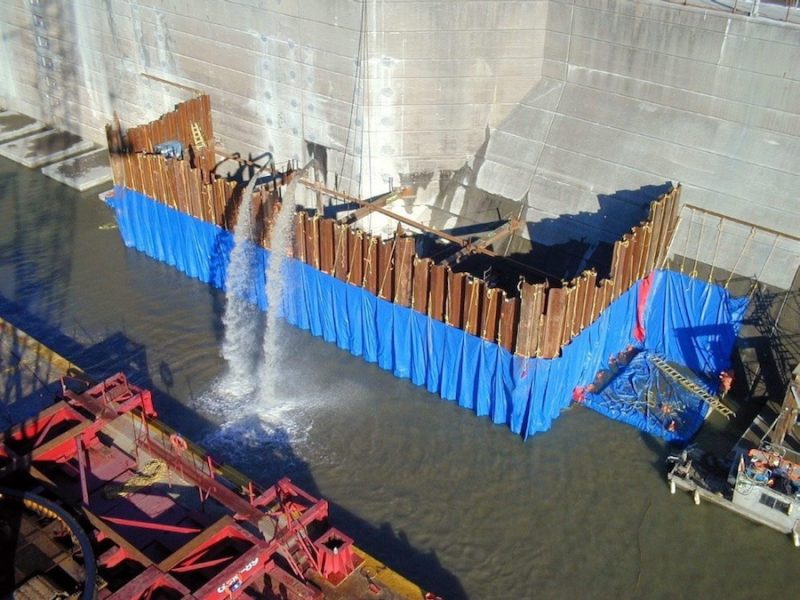
Cost Considerations
The cost of prefabricated cofferdam systems can vary based on several factors—including the size of the system, the complexity of the project, and the duration of use. For short-term projects, renting a system may be more economical—while purchasing a modular or water-filled system may offer long-term savings for contractors frequently working in wet environments.
Leasing Options
Many suppliers offer leasing options for contractors who need cofferdams for one-time or short-duration projects. This can significantly reduce upfront costs.
Purchasing for Long-Term Use
For contractors involved in frequent marine or dewatering projects, investing in a reusable cofferdam system can provide cost savings over time—especially with systems designed for quick installation and removal.
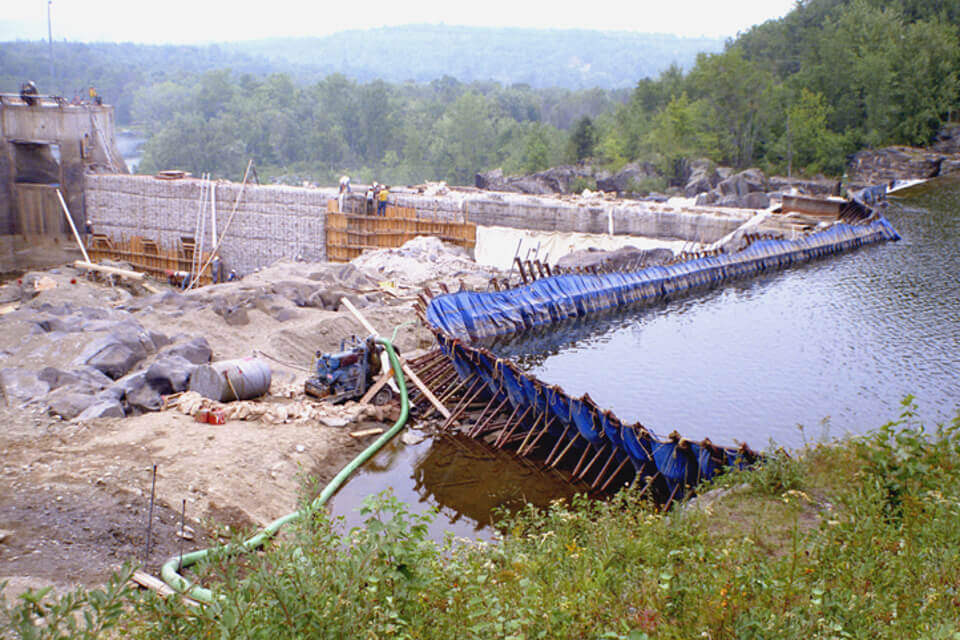
PILE BUCK’S TOP RECOMMENDED COFFERDAM SUPPLIERS
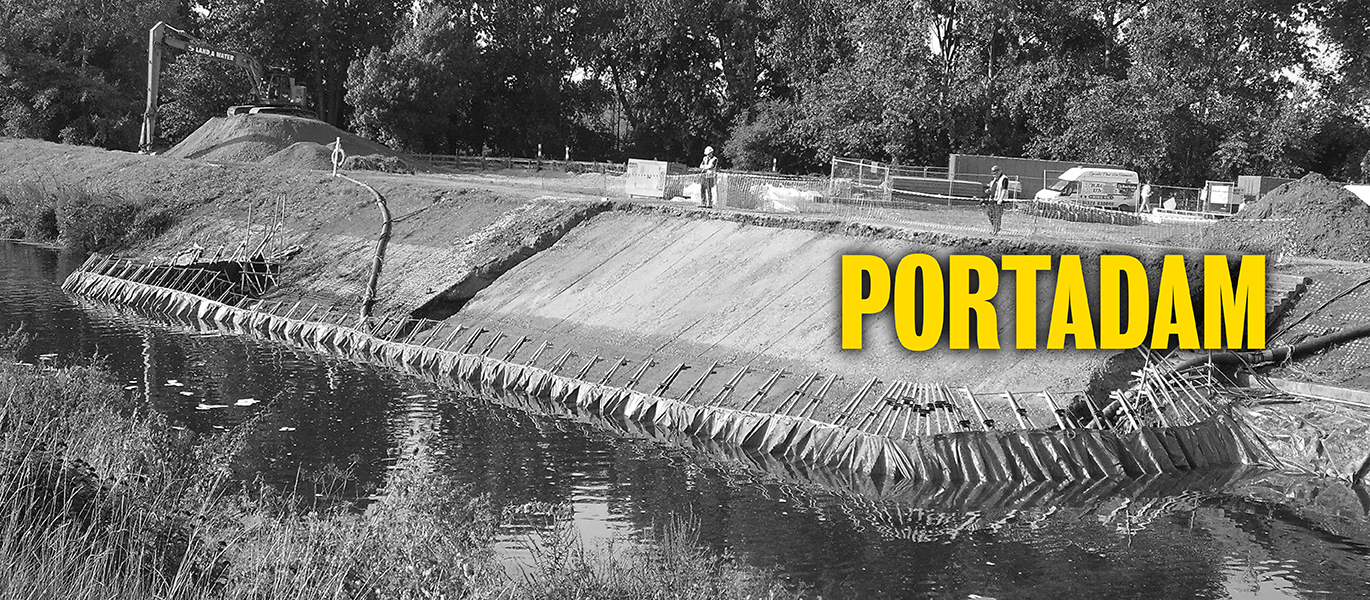
Description
Portadam is a leading provider of innovative water management solutions, specializing in temporary cofferdams, flood protection, and water storage systems. With over 40 years of industry expertise, Portadam’s modular systems provide cost-effective and environmentally conscious alternatives to traditional dewatering methods. Their customizable solutions are widely used in construction, civil engineering, disaster response, and environmental management projects, helping clients effectively handle water-related challenges. By minimizing environmental impact and project costs, Portadam ensures that their clients receive flexible, tailored solutions that meet the unique demands of each job site.
Portadam’s systems are designed to create safe, dry work environments, allowing for seamless execution of construction or maintenance activities. Their flood protection solutions help communities and businesses mitigate the devastating effects of rising waters, providing reliable barriers during emergencies. Committed to quality and sustainability, Portadam combines expertise with innovative technology to deliver water management solutions that work. Their dedication to supporting public and private sector projects contributes to safeguarding infrastructure, preserving natural resources, and enhancing overall community resilience against water-related risks.
Key Characteristics
- Cost-effective
- Scheduling Advantages
- Budget/Cost Savings
- Reusable
- Engineered
- Eco-friendly
- No Ground Penetration

